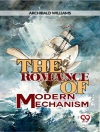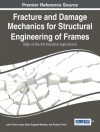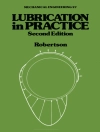In the concluding chapters of this book the author introduces GIM, the Global Intelligent Machine. GIM is a huge global hybrid machine, a combination of production machinery, information machinery and mechanized networks. In the future it may very well encompass all machinery on the globe.
The author discusses the development of machines from the Stone Age until the present and pays particular attention to the rise of the science of machines and the development of the relationship between science and technology.
The first production and information tools were invented in the Stone Age. In the Agricultural empires tools and machinery became more complex. During and after the Industrial Revolution the pace of innovation accelerated. In the 20th century the mechanization of production, information processing and networks became increasingly sophisticated. GIM is the culmination of this development.
GIM is no science fiction. GIM exists and is growing and getting smarter and smarter. Individuals and institutions are trying to control parts of this giant global robot. By looking at its history and by putting GIM in the context of the current developments, this book seeks to reach a fuller understanding of this phenomenon.
Cuprins
Preface.- 1 Introduction.- The Global Intelligent Machine.- Cultural evolution.- Production technology and information technology.- 2 The Rise of Homo Sapiens.- Animals using production tools.- Monkeys and apes using production tools.- Information tools in the animal world: clues, signs and signals.- Communicating honey bees.- Communication among monkeys and apes.- From the hairpin ancestor to Homo sapiens.- Olduwan technology.- The adze makers of Langda.- Language as an information tool.- The control of fire.- The Stone Age Revolution.- Information tools.- Whistle languages.- Talking drums.- The Ishango bone.- Orientation in space, maps in the Pacific.- 3 Tools in the Early Agricultural Empires.- Economic surplus.- Agriculture.- The wheel.- Monumental architecture.- Complete writing.- Towards the alphabet.- Mathematics.- Sundials and water clocks.- 4 The Axial Age and the Birth of Western Science.- The Axial Age.- The rise of abstract symbolic thought in China and India.- Oral versus written thought.- Aristotle’s Logic, a New Information Tool.- Knowledge-how versus knowledge-that.- Deductive science.- The birth of the theory of machines.- The wedge and the pulleys.- Archimedes.- The invention of the screw.- Heron’s Mechanics.- Combinations of simple machines.- Difficulties in understanding the wedge and the inclined plane.- 5 Machines in Classical Antiquity.- The invention of artillery.- Production machines in Vitruvius’ Ten Books on Architecture.- The Phaistos disc.- The abacus.- Water clocks and sundials.- The Armillary Sphere.- The anaphoric clock.- The astrolabe.- The mystery of the Antikythera mechanism.- The front dial.- The upper back dial.- The pin and slot mechanism.- The hodometer.- Automata.- 6 The Middle Ages.- Marco Polo.- Textile machines.- Military technology.- Metal technology.- Movable type printing.- The hodometer and Su Sung’s clock.- Automata.- Chinese influence in the West.- The Golden Age of Islamic Science.- Islamic culture, the information machines of the three Banu Musa.- Al-Jazari’s production machines.- Al-Muradi.- The rise of the West.- Jordanus.- The Vision of Ramon Llull.- The invention of the printing press.- Llull’s influence.- A new information machine: the mechanical clock.- 7 The Renaissance and the Scientific Revolution.- The impact of the printing press.- Da Vinci and the others.- Parachute, tank and machine gun.- Da Vinci as an engineer.- Da Vinci’s fame.- Theaters of machines.- Exterior ballistics.- Del Monte and simple machines.- Galilei and simple machines.- The Archimedean screw pump.- Astronomy.- Galilei’s Discorsi.- A remarkable Flemish engineer: Simon Stevin.- There is more.- The dream of a mathesis universalis.- Calculators.- Scepticism.- 8 The First Wave of Industrial Revolution: Cotton Textiles and Pig Iron.- The background.- The role of the Scientific Revolution.- A macroeconomic view of the Industrial Revolution.- The Malthusian trap.- The escape.- One or more Industrial Revolutions?.- Innovation and long waves.- The Control Revolution.- Textile industry.- Steam engines.- Safety valve and governor.- Robert Stirling.- Printing.- A changing world.- The clockmakers and the art of the transformation of motion.- Watt’s parallelogram.- Babbage’s machines.- 9 The Second Wave of Industrial Revolution: Railroads and Steel.- Globalization.- The Railroads.- Stephenson’s valve gear.- Corliss Engines.- Problems of control.- Organizational charts: the birth of a new information tool.- Office technology.- Kinematics and the birth of scientific technology.- The energetic approach.- Sadi Carnot and the Carnot machine.- Thermodynamics is born.- The application of thermodynamics to the design of actual machines.- 10 More Scientific Technology.- Electrical engineering.- Ballistics.- Iron in architecture.- Scientific management.- Control rooms.- Sales.- Calculators.- Statistical machines.- Scientific calculators.- Kelvin’s tide predictors.- Differential analyzers.- 11 Electronic Brains.- The fourth wave and the first programmable computers.- Turing machines: What can be computed in principle?.- Code breaking.- The mechanization of the mind.- Early computers in the USA.- Real Time Computing.- Software.- The computer becomes personal.- The fifth wave and the World Wide Web.- Smartphones and more.- 12 Towards the Global Intelligent Machine.- Early hybrid machines.- Karel Čapek.- An early parallel robot.- Analogue computer-controlled machines.- From analogue to numerical control.- Cybernetics.- An early serial robot.- Robotics.- The Stewart platform.- Field and service robots.- Artificial intelligence.- The Internet of Things.- The Global Intelligent Machine.- On the way to GIM.- GIM is growing fast.- Industry 4.0.- 13 Epilogue.- Hindsight.- A Brave New World?.- The battleground.- Cybercrime.- Unemployment.- Security, Privacy and fake news.- 14 Literature.- Index.












